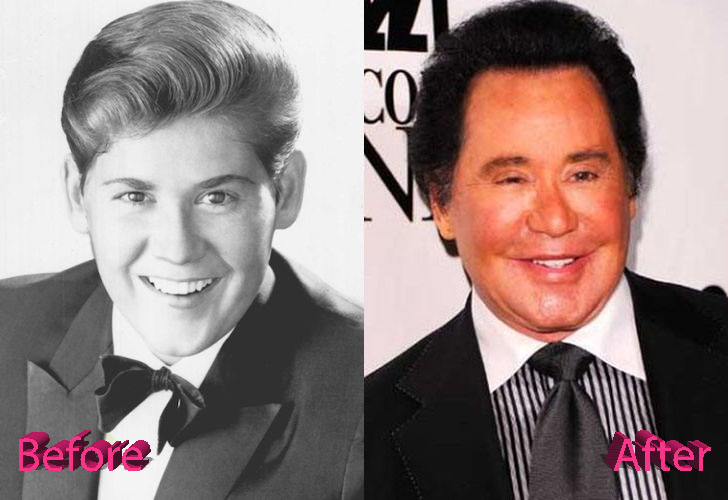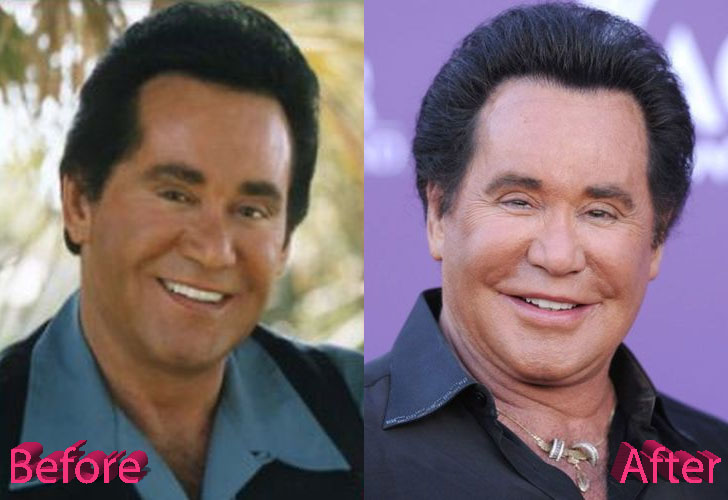Has the pursuit of eternal youth in the spotlight reshaped the very faces we once admired? The transformation of Wayne Newton, the iconic "Mr. Las Vegas," from a youthful entertainer to a figure of plastic surgery speculation, raises critical questions about beauty, aging, and the pressures of fame.
Countless stories over the years have echoed anonymous critics, their assessments dissecting every facet of Newton's evolving appearance. They've judged his smile, speculated about cosmetic procedures, and, in some cases, levied harsh judgments on the results. While there isnt much inherent value in dissecting the motivations behind cosmetic surgeries or indulging in the gossip surrounding them, the undeniable changes in Newtons face, particularly after his 2018 appearance on "The Bachelorette," have ignited a public conversation that continues to simmer.
The Las Vegas favorite, Wayne Newton, now 82, has made a considerable mark in the world of entertainment. His career, which commenced when he was only 17 in 1959, has produced critical praise. However, the whispers and criticisms directed at Newton's appearance have become as prominent as his stage presence. Fans, and even casual observers, have voiced their opinions, some humorously, others with a critical edge, about his evolving appearance. The entertainers face has been the subject of intense discussion. Wayne Newton has had so much plastic surgery that his face cant move, but you can still see the disappointment on whats left of it, one individual quipped.
The "Wayne Newton face" became a point of reference, as it did when one commentator noted, "I see Matt Gaetz went in to ask for the 'Wayne Newton face' before his OAN debut tonight," underscoring the cultural impact of Newtons visage.
Despite the speculation, Newton has never openly admitted to undergoing cosmetic surgery. Yet, the visual evidence, as many have noted, seems undeniable. The "before and after" photos tell a story, prompting discussions about facelifts, eyelid surgery, Botox injections, fillers, and even a potential nose job. This has caused individuals to wonder to what extent he's had alleged cosmetic surgery. Matthew Schulman, a plastic surgery expert, commented on the classic signs of multiple treatments, such as upper and lower eyelid surgeries and full face and neck lifts.
| Category | Details |
|---|---|
| Full Name | Wayne Newton |
| Born | May 16, 1942 |
| Birthplace | Norfolk, Virginia, U.S. |
| Age | 82 |
| Occupation | Singer, Entertainer |
| Years Active | 1959Present |
| Notable Songs | "Danke Schoen", "Years", "Red Roses for a Blue Lady" |
| Known For | "Mr. Las Vegas" persona, Long-running Las Vegas shows |
| Spouse(s) | Elaine Okahara (m. 1968; div. 1985), Kathleen McCrone (m. 1994) |
| Official Website | Wayne Newton Official Website |
The conversation also extends beyond Newton himself. Sylvester Stallone, another icon of the entertainment world, has long been rumored to have undergone plastic surgery. The focus on physical appearance within the entertainment industry, particularly regarding the aging process, is clearly evident.
The story of Wayne Newton's changing appearance is not merely about aesthetic enhancements. It is a narrative of fame, the pressures of maintaining a certain image, and the public's ever-present gaze. Before plastic surgery, Newton had a youthful appearance that he enhanced over time. This tale prompts deeper reflection on the influence of media, public perceptions of beauty, and the choices public figures make in response to the aging process.
The constant scrutiny can be challenging for those in the public eye. Newtons story invites us to consider the effects of such scrutiny. Wayne Newton didnt like it, but with his usual optimism, he asked a plastic surgeon to 'preserve' his face. That is, to keep the appearance in the same condition until the end of life. This sentiment reveals a deep-seated fear of aging and a desire to maintain a particular image, which is something many public figures likely understand, but it comes at a cost. As the public continues to follow and interpret the evolution of "Mr. Las Vegas," the conversation around cosmetic surgery, its effects, and its cultural implications will inevitably continue.
The Greek word "plastikos," which means "to change the shape," lies at the heart of the discourse. In Newton's case, the shape has been dramatically altered, which makes the discussion about it even more relevant. It's a conversation that goes beyond mere physical changes; it also enters into the complex interplay of celebrity, public perception, and the quest for longevity.
The legacy of Wayne Newton, and the choices he has made regarding his appearance, will continue to be a point of public fascination and discussion. The narrative serves as a reminder that, behind the glittering stage persona, lies a human story, one grappling with the pressures of fame, the passage of time, and the quest to remain relevant in a perpetually changing world.


